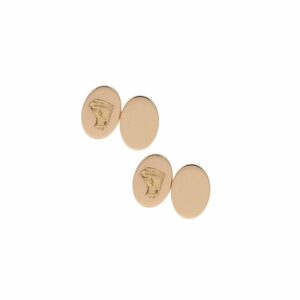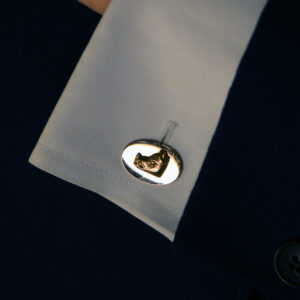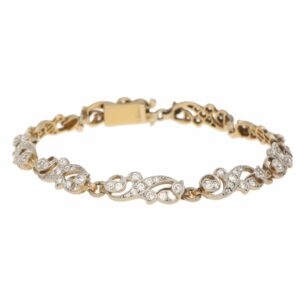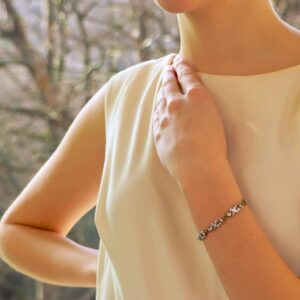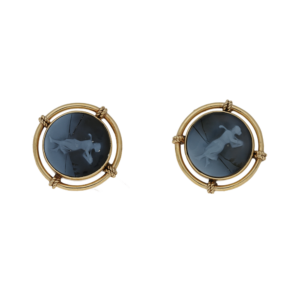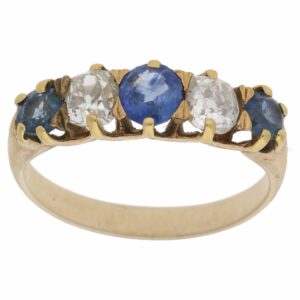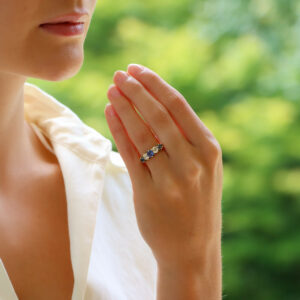With a reign than spanned more than 60 years from 1837 to 1901, Queen Victoria was hugely influential in the history of jewellery design. Following the rise of Britain’s middle class and the industrial revolution, jewellery was no longer restricted to the wealthy and Victorian common people could afford to buy jewellery for the first time.
Victoria’s vast reign saw many styles come in and out of fashion. Jewellery styles also changed to reflect the wider socio-economic background of the country at the time. They also mirrored the Queen’s more personal circumstances, most notably the premature death of her husband Albert in 1861 which prompted a time of mourning and subsequent dramatic jewellery styles.
The Victorian era is divided into three subcategories – the Romantic Period (1837-1861) which encompasses Victoria’s ascension to the throne and early happy years as Queen, The Grand Period (1861-1880) which was marked by the deaths of the Queen’s mother and husband, Albert. These were followed by Aesthetic Period (1880-1901), also known as the late Victorian period, which witnessed the beginning of the ‘Belle Epoque’ across Europe which kick started the extravagance of the following Edwardian period of jewellery.
The Romantic period was a celebration of the young monarch’s love to her husband Albert, the birth of her nine children, as well as the overall boom in wealth and prosperity in the British Empire. The jewellery styles reflected the joy and positive growth surrounding Victoria as she became Queen and enjoyed her early happy years of family life.
Jewellery of the Romantic Period included floral motifs and brightly coloured gemstones. Most pieces were feminine and ornate using flowers, hearts, birds and bows as motifs. Victoria’s engagement ring from Albert was the first famous Victorian ring and was an emerald eyed snake eating its own tail which in ancient Rome symbolised eternal love. Albert designed the ring himself and historians believe that Victoria was wearing it when she was buried. This snake motif became a popular base for necklaces, pins and other jewellery. Broaches, lockets, cameos and large bracelets were also popular symbolic items during the Romantic Period.
This sentimentality and romance of the Romantic Period was brought to an abrupt halt at the beginning of The Grand Period in 1861 when Prince Albert fell victim to typhoid fever and passed away. Victoria entered into a long period of mourning which many historians say she never fully recovered from.
Victoria’s art of mourning following the death of her husband sparked a nationwide trend of wearing black clothes and jewellery in the months, or in Victoria’s case years, after a relative’s death. The jewellery worn during periods of mourning was typically made of jet, a fossilized coal, as well as black onyx. These dark materials were decorated with seed pearls which were used to reflect tears. While it first came into fashion in the Georgian period, mourning jewellery had a resurgence during this time.
At the same time as the Queen’s grief, improved travel prompted exploration to ancient sites which inspired a period of ‘Revivalism’, in which jewellery imitated Renaissance and Egyptian designs. The rise in British power and wealth also meant that there was an unforeseen increase in the availability of gemstones and precious metals. The era also saw the influx of gold following the Californian Gold Rush which began at the beginning of 1848. Alongside advancements in the industrial revolution, this meant that jewellers could use gold more economically, therefore reducing costs and making pieces affordable to the masses.
Diamonds came into favour with the discovery and opening of the South African diamond mines in 1867 as well as the rise in popularity of silver as a base material following its discovery in Nevada in 1860. The majority of jewellery produced during this period was still made from low-karat gold.
The Aesthetic Period during the final stage of the Victorian era saw an aging Queen be gradually eclipsed by the fashions of her nine children and their spouses, most notably by her son and heir, Edward. The Prince favoured lavish styles and his wife Alexandra regularly sported the iconic Victorian choker style necklace. After Victoria’s Diamond Jubilee celebrations in June 1897 there was a surge in demand for the diamond and silver jewellery which commemorated the event.
Social changes and the beginning of the Edwardian era also influenced the pieces of the Aesthetic Period. The huge boom in wealth saw a rise in leisure activities, even for workers, and Victorian women who were once confined to the home enjoyed new levels of independence. This led to larger Victorian pieces gradually being replaced by smaller Edwardian pieces which were easier to wear to accommodate the changing times.
Victorian jewellery today remains coveted and highly collectible. Pieces reflected the wider changes in growth of the British Empire and new designs and materials paved the way for a dramatic upheaval of style and design in the twentieth century.


